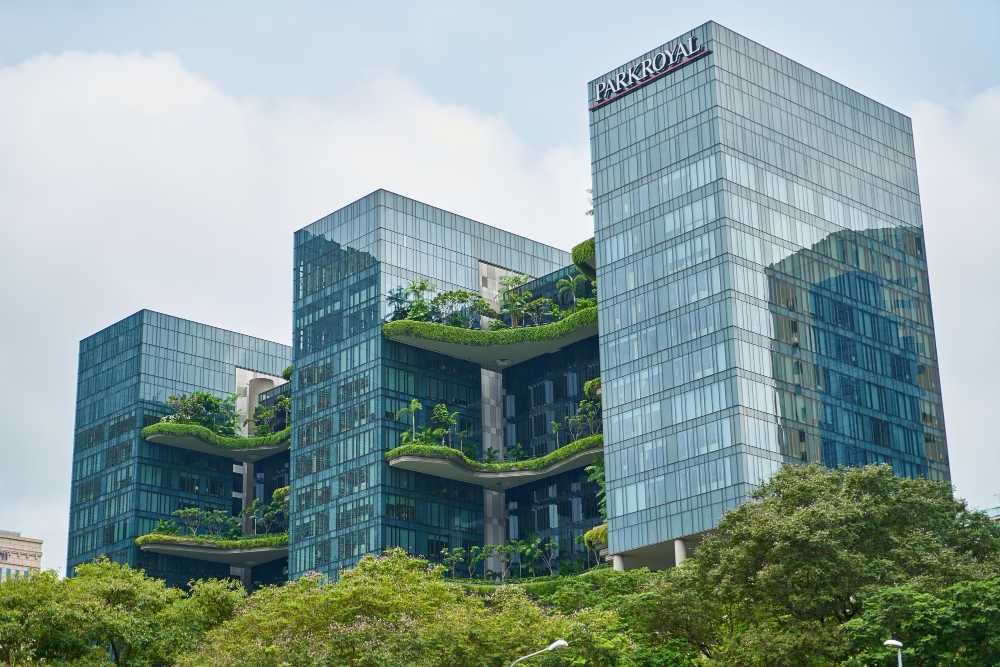
Urban Design Services That Meet Australian Green Building Standards
Discover how urban design services help meet Australian green building standards. Learn how Smart Planning and Design supports sustainable, compliant projects.
read more

In the heart of bustling cities, where concrete once dominated skylines, a green revolution is quietly taking root—literally. High-rise hydroponics, once a niche experiment, now transforms sterile rooftops and underutilized terraces into thriving urban farms. For forward-thinking developers and architects, these vertical ecosystems aren’t just sustainability statements—they’re powerful tools to boost tenant satisfaction, slash operational costs, and future-proof properties in competitive markets.
Urban populations are growing hungrier for connection—not just to Wi-Fi, but to nature and community. Traditional amenities like pools and gyms no longer suffice; today’s tenants crave spaces that nourish body and soul. Enter high-rise hydroponics: soil-free farms using nutrient-rich water and LED lighting to grow kale, herbs, and strawberries 30 stories above street level. In Singapore’s "Sky Greens" towers, residents harvest produce steps from their doorsteps, while Brooklyn’s "Eagle Street Rooftop Farm" supplies restaurants below. This isn’t gardening—it’s a strategic value proposition where carrots become leasing catalysts.
Why are luxury developers like Lendlease and Mitsubishi Fudosan investing six-figures in hydroponic amenities? The math speaks volumes. First, operational savings: On-site farms reduce building energy costs by 15–20% through natural insulation and evaporative cooling. Second, tenant retention: Toronto’s "Living Water Gardens" reported 92% lease renewals after installing communal herb gardens—tenants stay for the experience. Third, revenue streams: Chicago’s "The Plant" sells hyper-local greens to its own café, turning idle rooftops into profit centers. For architects, hydroponics also solves urban heat island effects, lowering ambient temperatures by up to 7°F—a passive win for climate resilience.
Successful hydroponic integration demands more than tossing seeds on a roof. Smart spatial planning is key. At Vancouver’s "EcoScraper," architects designed tiered grow towers with modular pods, allowing customization for herbs (quick harvest) or tomatoes (higher yields). Lighting is calibrated to wavelengths that accelerate growth without blinding residents, while rainwater capture systems slash irrigation costs. Crucially, these spaces double as social hubs: Berlin’s "Himmelbeet" rooftop farm hosts yoga classes amid edible flowers, proving that community grows where crops do. The lesson? Blend functionality with delight—make farms feel like lush retreats, not industrial labs.
Skeptics argue hydroponics demand too much expertise or energy. Reality debunks this. Modern systems like "ZipGrow" or "Tower Garden" automate pH balancing and nutrient dosing, requiring less labor than traditional landscaping. Energy concerns? Solar-powered LEDs and gravity-fed water systems now make farms net-zero. For ROI clarity, consider New York’s "Bronx Box House": its $120K hydroponic investment paid back in 18 months via reduced grocery bills (tenant perk), salad sales to local grocers, and a 17% rent premium. As one developer quipped, "Lettuce pays the mortgage."
Tomorrow’s hydroponics will fuse biology with AI. Imagine apps notifying tenants, "Your basil is ready—reserve harvest time!" or sensors adjusting nutrients based on weather forecasts. Projects like Seoul’s "Smart Farm Tower" already integrate blockchain to trace produce from roof to table, appealing to eco-conscious renters. For developers, this evolution means farms won’t just be amenities—they’ll be branded ecosystems that position buildings as living organisms. As urban populations swell, high-rise hydroponics shift from novelty to necessity: fresh food, fresh air, and fresh value, all grown sky-high.

Discover how urban design services help meet Australian green building standards. Learn how Smart Planning and Design supports sustainable, compliant projects.
read more

Discover the benefits of mixed-use developments in town planning Australia. Learn how they boost convenience, sustainability, and community connection.
read more

Discover why feasibility studies are essential in town planning Australia. Learn how they save time, reduce risks, and improve approval chances.
read more